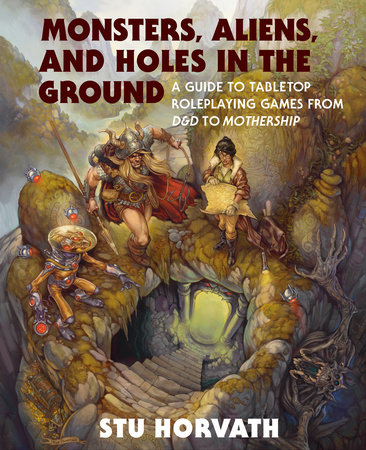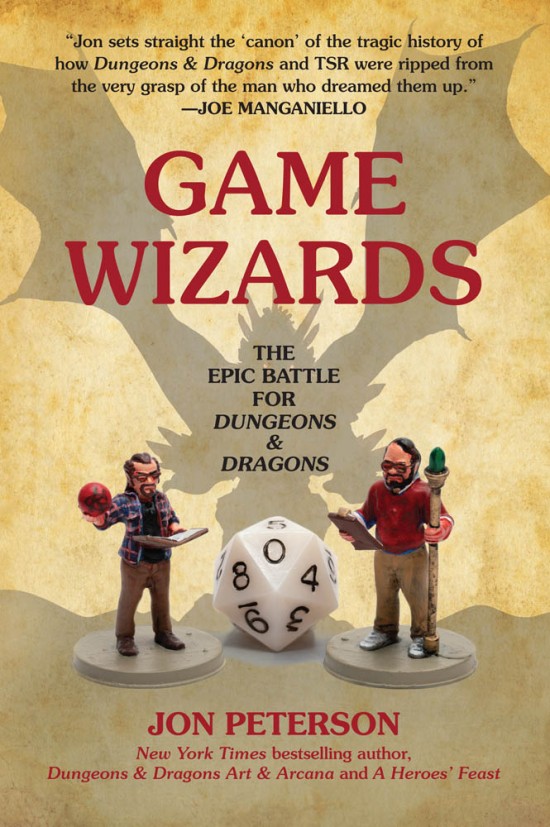At the MIT Press, we know nerdy
Our authors, loyal readers, and staff are all unapologetically enthusiastic about their niche interests. If that makes us nerds, we’ll wear the honorific proudly.
We’ve put together book recommendations for every type of nerd, from the peer-reviewers and scholars to the armchair intellectuals and budding aficionados. Explore books for the gamer geeks in your life below. Happy holidays and happy reading.
Use code NERD20 online and in person at the MIT Press Bookstore for 20% off the below books until January 31, 2024. Terms and conditions apply.

Monsters, Aliens, and Holes in the Ground: A Guide to Tabletop Roleplaying Games from D&D to Mothership by Stu Horvath
When Gary Gygax and Dave Arneson released Dungeons & Dragons in 1974, they created the first roleplaying game of all time. Little did they know that their humble box set of three small digest-sized booklets would spawn an entire industry practically overnight. In Monsters, Aliens, and Holes in the Ground, Stu Horvath explores how the hobby of roleplaying games, commonly known as RPGs, blossomed out of an unlikely pop culture phenomenon and became a dominant gaming form by the 2010s. Going far beyond D&D, this heavily illustrated tome covers more than three hundred different RPGs that have been published in the last five decades.
A deluxe edition of this book is also available.
“Horvath’s love for the genre shines through every entry in this immaculately researched tome. It’s exhaustive but not exhausting; you’ll keep reading for pleasure long after you’ve found the info you came for.” —Steve Jackson, perpetrator of Munchkin

Playing Place: Board Games, Popular Culture, Space edited by Chad Randl and D. Medina Lasansky
Board games harness the creation of entirely new worlds. From the medieval warlord to the modern urban planner, players are permitted to inhabit a staggering variety of roles and are prompted to incorporate preexisting notions of placemaking into their decisions. To what extent do board games represent the social context of their production? How might they reinforce or subvert normative ideas of community and fulfillment? In Playing Place, Chad Randl and D. Medina Lasansky have curated a collection of thirty-seven fascinating essays, supplemented by a rich trove of photo illustrations, that unpack these questions with breadth and care.
“Playing Place delightfully explores how architecture, cities, and urban culture unexpectedly yet inextricably coexist in the wonderful world of the board game. A fascinating, amusing, and eye-opening collection of essays.” —Iain Borden, University College London; author of Skateboarding and the City

Game Wizards: The Epic Battle for Dungeons & Dragons by Jon Peterson
When Dungeons & Dragons was first released to a small hobby community, it hardly seemed destined for mainstream success—and yet this arcane tabletop role-playing game became an unlikely pop culture phenomenon. In Game Wizards, Jon Peterson chronicles the rise of Dungeons & Dragons from hobbyist pastime to mass-market sensation, from the initial collaboration to the later feud of its creators, Gary Gygax and Dave Arneson. As the game’s fiftieth anniversary approaches, Peterson—a noted authority on role-playing games—explains how D&D and its creators navigated their successes, setbacks, and controversies.
“The book shines a really strong light on the ‘secret history’ of the company.” —Dungeon Master Magazine

The Beauty of Games by Frank Lantz
Are games art? This question is a dominant mode of thinking about games and play in the twenty-first century, but it is fundamentally the wrong question. Instead, Frank Lantz proposes in his provocative new book, The Beauty of Games, that we think about games and how they create meaning through the lens of the aesthetic. We should think of games, he writes, the same way we think of literature, theater, or music—as a form that ranges from deep and profound to easy and disposable, and everything in between. Games are the aesthetic form of interactive systems, a set of possibilities connected by rules of cause and effect.
“In reframing the players’ minds as the true field of play in every game, Lantz has mapped out a compelling, inspiring new way to talk about games and play.” —Bennett Foddy, game designer

The Stuff Games Are Made Of by Pippin Barr
What are video games made of? And what can that tell us about what they mean? In The Stuff Games Are Made Of, experimental game maker Pippin Barr explores the materials of video game design. Taking the reader on a deep dive into eight case studies of his own games, Barr illuminates the complex nature of video games and video game design, and the possibilities both offer for exploring ideas big and small.
“Of all the books that have made me think deeply about games and design, this is my favorite. It’s winningly personal while inviting you to join in genuinely new philosophies of play and being.” —Tanya X. Short, Creative Director, Kitfox Games; coeditor of Procedural Generation in Game Design and Procedural Storytelling in Game Design


